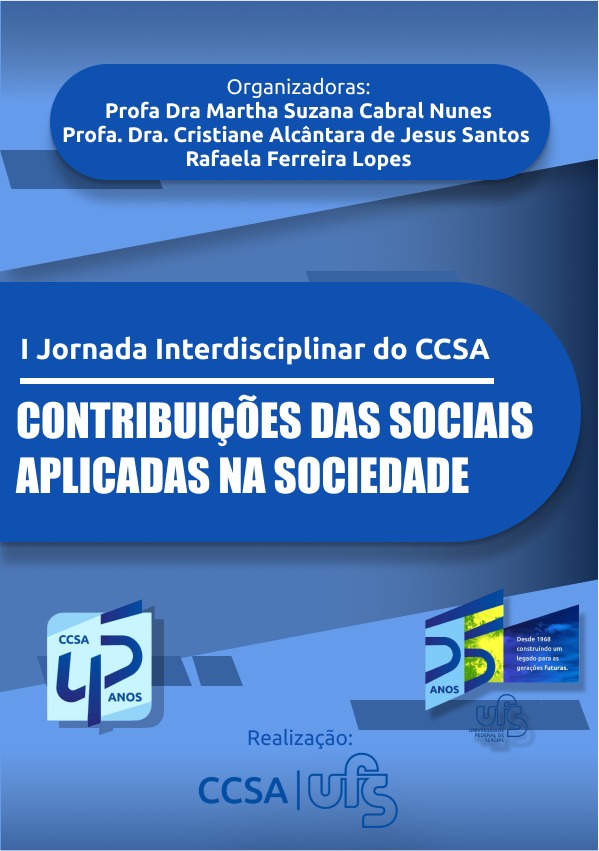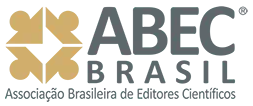Audio description as a resource for inclusion and cultural accessibility in Information Science
DOI:
https://doi.org/10.33467/conci.v6i.20095Keywords:
audio description, access to information, accessibility, cultural mediationAbstract
This professional master's research in Information Science (IS), which presents a study on audio description, applies to the purpose of expanding the informational repertoire of visitors to Largo da Gente Sergipana. The work was based on IS, with a research problem on accessibility to cultural education content. The exploratory methodology used, with a qualitative approach and applied nature, was based on action research, with direct collaboration with masters of cultural movements, allowing us to understand what information these individuals would like to pass on to society, in an attempt to undo a conservative path of research mediated by classical patterns and perspectives. The results demonstrate that audio description can contribute to the cultural education of different audiences, especially those with visual impairment, including children, adolescents, adults and elderly people with low vision, people with intellectual development disorders, autistic people, people with multiple disabilities, not literate, tourists, among other groups. From an academic point of view, the elaboration of the audio description installed in the square in October 2022 followed a humanist approach to professional performance in IC.
Downloads
References
ARAÚJO, Carlos Alberto Ávila. Teorias e tendências contemporâneas da ciência da informação. Informação em Pauta, Fortaleza, CE, v. 2, n. 2, jul./dez. 2017. Disponível em: http://www.periodicos.ufc.br/informacaoempauta/article/view/20162/71589. Acesso em: 20 nov. 2020.
AUDIODESCRIÇÃO DAS esculturas do Largo da Gente Sergipana. Locução de Diane Veloso. São Cristóvão, SE: PPGCI/UFS, ago. 2022. Podcast. Disponível em: https://open.spotify.com/show/5kWI8JA3ebRSldYoU1UZLu?si=3def6c1ff50f4e0f&nd=1.
BORKO, Harold. Information science: what is it? American Documentation, v. 19, n. 1, p. 3-5, 1968.
BRASIL. Instrução Normativa nº 116, de 18 de dezembro de 2014. Dispõe sobre as normas gerais e critérios básicos de acessibilidade a serem observados por projetos audiovisuais financiados com recursos públicos federais geridos pela ANCINE; altera as Instruções Normativas nº 22/03, 44/05, 61/07 e 80/08, e dá outras providências. D.O.U., 18 dez. 2014. Disponível em: https://antigo.ancine.gov.br/pt-br/legislacao/instrucoes-normativas-consolidadas/instru-o-normativa-n-116-de-18-de-dezembro-de-2014. Acesso em: 6 out. 2021.
BRASIL. Instrução Normativa nº 128, de 13 de setembro de 2016. Dispõe sobre as normas e critérios básicos de acessibilidade visual e auditiva a serem observados nos segmentos de distribuição e exibição cinematográfica. D.O.U.,16 set. 2016. Disponível em: https://www.in.gov.br/materia/-asset_publisher/Kujrw0TZC2Mb/content/id/21918405/do1-2016-09-16-instrucao-normativa-n-128-de-13-de-setembro-de-2016-21918309. Acesso em: 6 out. 2021.
CAPURRO, Rafael. Epistemologia e Ciência da Informação. In: ENCONTRO NACIONAL DE PESQUISA EM CIÊNCIA DA INFORMAÇÃO, 5., 2003, Belo Horizonte. Anais [...]. Belo Horizonte: Universidade Federal de Minas Gerais, 2003. Disponível em: http://www.capurro.de/enancib_p.htm. Acesso em: 20 nov. 2020.
CONCEIÇÃO, Alexandre da Silva. A audiodescrição das esculturas do Largo da Gente Sergipana: um recurso de inclusão e acessibilidade às representações das manifestações culturais. 2022. Orientação: Germana G. de Araujo. Dissertação (Mestrado Profissional em Gestão da Informação e do Conhecimento) – Universidade Federal de Sergipe. São Cristóvão-SE.
FRANCO, Eliana Paes Cardoso; SILVA, Manoela Cristina Correia Carvalho da. Audiodescrição: Breve Passeio Histórico. In: MOTTA, Lívia Maria Villela de Mello; ROMEU FILHO, Paulo (org.). Audiodescrição: transformando imagens em palavras. São Paulo: Secretaria dos Direitos da Pessoa com Deficiência do Estado de São Paulo, 2010.
NASCIMENTO, Lindiane Faria do. Guia de orientação aos professores da educação básica, 2017. Disponível em: https://educapes.capes.gov.br/bitstream/capes/207042/2/Guia_Audiodescricao_Lindi.pdf. Acesso em: 10 ago. 2021.
NUNES, Elton Vergara et al. Mídias do conhecimento: um retrato da audiodescrição no Brasil. DataGramaZero - Revista de Ciência da Informação, v. 11, n. 6, dezembro, 2010.
SAMPIERI, Roberto Hernández; COLLADO, Carlos Fernández; LUCIO, Maria Del Pilar Baptista. Metodologia da pesquisa. Porto Alegre: Penso, 2013.
THIOLLENT, Michel. Pesquisa-ação nas organizações. 2. ed. São Paulo: Atlas, 2009.
VILARONGA, Iracema. “Olhares cegos”: a audiodescrição e a formação de pessoas com deficiência visual. In: MOTTA, Lívia Maria Villela de Mello; ROMEU FILHO, Paulo (org.). Audiodescrição: transformando imagens em palavras. São Paulo: Secretaria dos Direitos da Pessoa com Deficiência do Estado de São Paulo, 2010.
Published
How to Cite
Issue
Section
License
Copyright (c) 2023 Germana Gonçalves de Araujo, Alexandre da Silva Conceição (in memoriam)

This work is licensed under a Creative Commons Attribution 4.0 International License.
ConCI adopts the CC BY 4.0 License  , where licensees have the right to copy, distribute, display and perform the work and make derivative works from it, provided that due credit is given to the author or licensor.
, where licensees have the right to copy, distribute, display and perform the work and make derivative works from it, provided that due credit is given to the author or licensor.
ConCI considers that the author holds the copyright on his/her production, but the author must agree to grant the journal the right to the first publication. In addition, the author must agree that:
• in any publications in institutional repositories, book chapters or other productions resulting from works published in ConCI, due credit must be given to the initial publication.
• are authorized to publish and distribute their work online (eg, in institutional repositories or on their personal page) at any time before or during the editorial process, as this can generate productive changes as well as increase the impact and citation of the work published by ConCI.














 Licenciada por
Licenciada por 